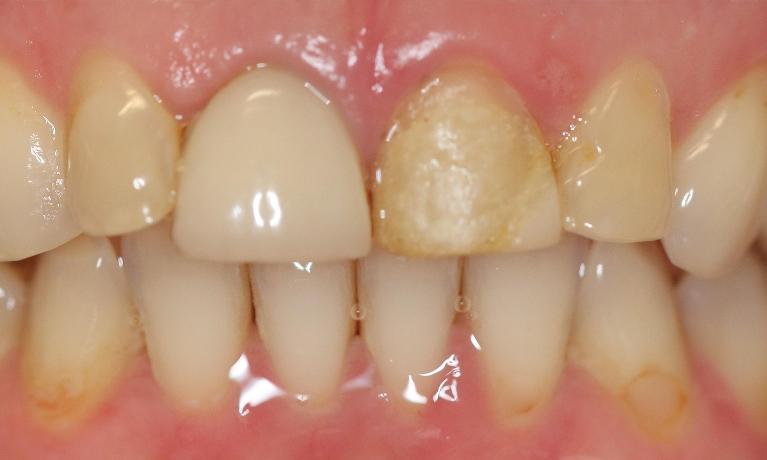Teeth Whitening / Bleaching
Teeth whitening or bleaching allows discoloured, yellowed teeth to be restored to a more aesthetically pleasant lighter shade.
Bleaching can be carried out either at home, with a home delivery system or in the dentist's chair with an office bleaching system.
How does bleaching work?
Whitening of teeth is achieved by the application of a bleaching agent- either carbamide peroxide or hydrogen peroxide. Carbamide peroxide breaks down to give hydrogen peroxide. The hydrogen peroxide then breaks down into perhydroxyl and oxygen when activated. These penetrate the tooth enamel and react with the stain molecules, rendering them colourless. The breakdown of the peroxides can be accelerated with a bright light. As carbamide peroxide takes longer to break down, it is more stable and can be left on the teeth surfaces for longer periods.
In Australia, ONLY registered dental practitioners are allowed to carry out teeth whitening procedures or supply bleaching gels where the gel concentration exceeds 6%.
Home bleaching
Custom-made bleaching trays are supplied along with the bleaching gel kit. The bleaching gel is placed in the trays and these are worn for a minimum of 1 hour/day over several weeks until the desired result is achieved.
Advantages:
- Allows a measure of control on the degree of whitening. The longer one uses the bleaching system, the whiter the shade obtained.
- The trays carry a one-off cost and if looked after, can be kept for years. Bleaching gel can be obtained as necessary.
Disadvantages:
- Discipline in wearing the trays for the required length of time is needed if results are to be seen
- Teeth can become transiently hypersensitive. It is advised that the bleaching process is discontinued for a day or two if the teeth become too sensitive. Bleaching can be resumed once sensitivity levels have reduced.
Office bleaching
Bleaching is carried out in the dental surgery. Protective barriers are applied to protect the lips and gums. Four to five applications of hydrogen peroxide bleaching gel (maximum concentration 37.5%) are carried out. A bright light is applied to the gel after placement of the teeth surfaces. This activates the peroxide to achieve the whitening effect. The total time for the process can take up to 1.5 hours. It is absolutely necessary to ensure the teeth and gums are healthy before bleaching is carried out.
Advantages:
- Once-off process that delivers good results for those who are time-restricted for home bleaching or who need more immediate results
Disadvantages:
- The degree of whitening cannot be predicted as this is a once-off procedure. Extremely discoloured teeth might need more than one session of office bleaching to achieve desired result or might need to be supplemented with home bleaching.
- Slightly more heightened sensitivity of teeth to cold can be expected after the procedure. This is a transient effect that can last a day or two.





